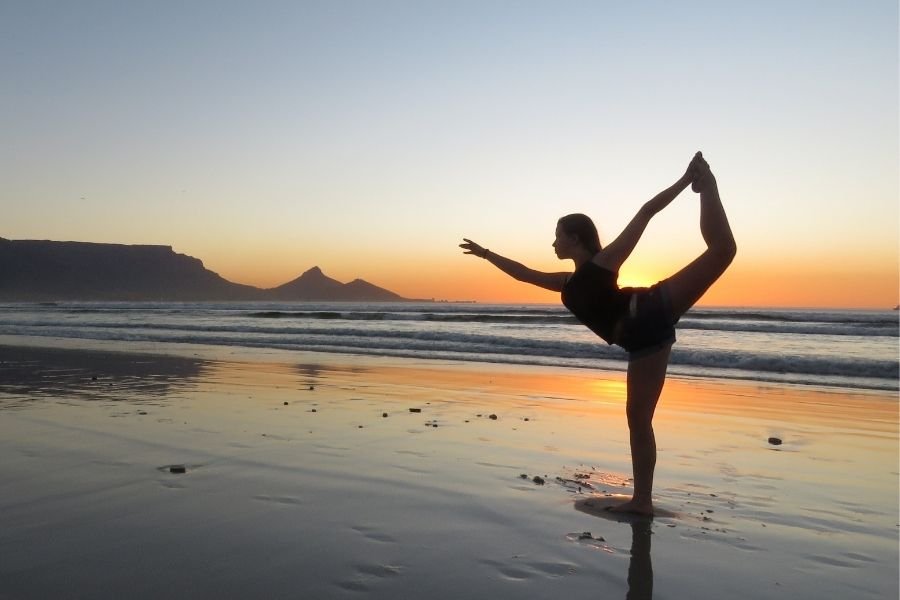
Yoga, at its core, is a practice of union — of mind, body, breath, and spirit — and it begins with something beautifully simple: observation. Ancient yogis looked to nature for wisdom, noticing how animals moved, rested, and thrived in harmony with their environment. They realised that embodying these natural movements could lead to greater physical health and inner balance. That’s why many yoga postures mimic the shapes, rhythms, and behaviors of animals or elements in the natural world — like the stretching spine of a cat, the grounding of a mountain, or the fluid grace of a cobra.
Every yoga asana (pose) is thoughtfully designed to activate specific energy centres within the body. The process is subtle yet powerful:
This cycle not only supports physical vitality but also encourages mental clarity and emotional balance.
If you’re just starting your yoga journey, consider beginning with Hatha Yoga. It’s a slower-paced style that emphasises alignment, breath awareness, and gentle transitions. It’s especially welcoming for beginners because it reduces stress on the body while helping you gradually build strength, flexibility, and confidence. A consistent practice can soothe the nervous system, massage internal organs, and leave you feeling more connected to your body — all without needing to be overly strenuous.
Beginner’s Guide to Yoga to Begin With
Surya Namaskar (Sun Salutation)
Surya Namaskar is a dynamic sequence of 12 poses that energizes the body, improves flexibility, and enhances circulation. It’s a holistic practice that engages both the mind and body, making it ideal for building strength, calming the mind, and warming up the muscles.
Pawanamuktasana (Wind-Relieving Pose)
This gentle asana helps release trapped gas and improve digestion while stretching the lower back. It promotes relaxation and supports detoxification by stimulating abdominal and reproductive organs.
Eye Relaxation Techniques
In today’s digital age, our eyes are often strained due to prolonged screen time. Incorporating eye relaxation techniques can reduce strain, improve focus, and refresh tired eyes.
Techniques:
Standing Asanas: Tadasana & Trikonasana
Standing poses enhance balance, strength, and endurance while grounding the practitioner. These foundational asanas are essential for developing stability and body awareness.
Tadasana (Mountain Pose):
Trikonasana (Triangle Pose):
A Note on Breath and Patience
Remember, yoga isn’t about achieving the perfect pose — it’s about listening to your body, moving with intention, and connecting with your breath. A slow, mindful approach allows you to truly feel each movement and its effect on your system. You don’t need to be flexible or fit to start — you only need curiosity and a willingness to explore.
Over time, your body will open, your mind will quieten, and your breath will become your most trusted guide. Begin where you are, and let your yoga journey grow organically, like a tree rooting down into the earth before it reaches toward the sun.
Q1: Is yoga suitable for complete beginners?
Yes! Yoga is perfect for beginners because it’s adaptable, gentle, and focused on breath and awareness. You don’t need to be flexible or strong to start.
Q2: What style of yoga should I begin with?
Hatha Yoga is ideal for beginners. It’s slower-paced and focuses on alignment, breathing, and building a solid foundation.
Q3: How often should a beginner do yoga?
Starting with 2–3 sessions a week is great. Even 15–20 minutes a day can create positive shifts in your body and mind.
Q4: Can I do yoga at home without equipment?
Absolutely. All you need is a quiet space and a yoga mat. Optional props like blocks or straps can help, but aren’t necessary for beginners.
Q5: How will yoga benefit me physically and emotionally?
Yoga improves flexibility, posture, and digestion while calming the mind, reducing anxiety, and supporting emotional resilience.
Q6: Can I book a session even if I’ve never tried yoga before?
Yes! In fact, our sessions are tailored for beginners. We’ll guide you gently, answer all your questions, and make sure you feel safe and supported.
Looking for personalized guidance on learning how to start with yoga and integrate it in your life. We’re here to help! Reach out to us via Contact Us or WhatsApp for expert coaching and support, and let’s create a personalised yoga session for you!